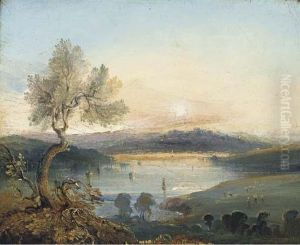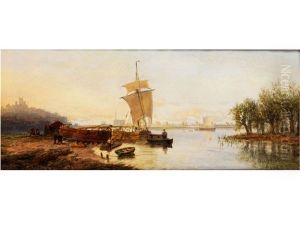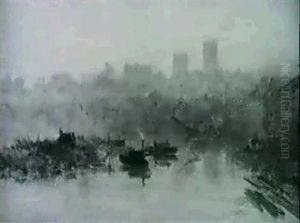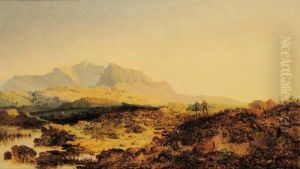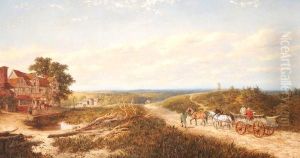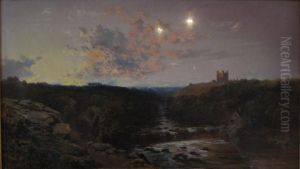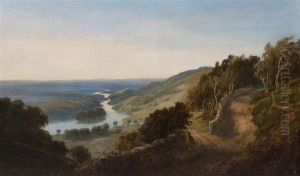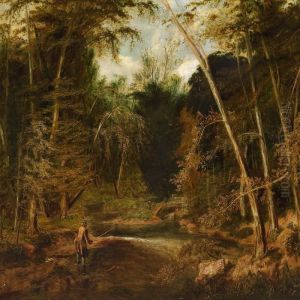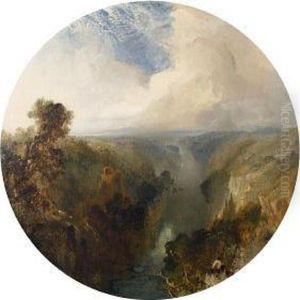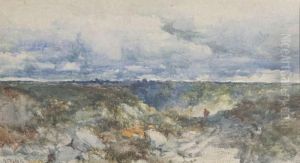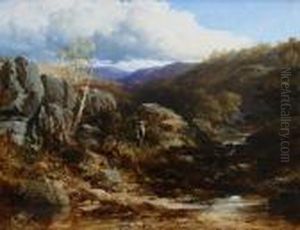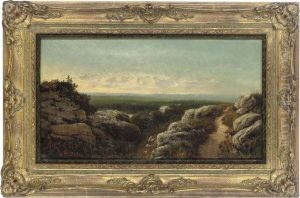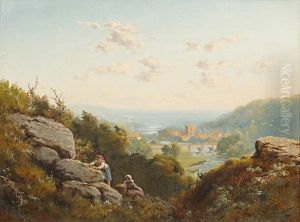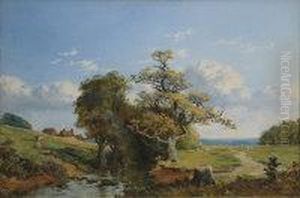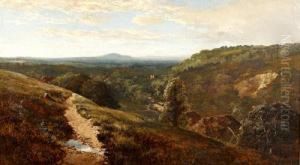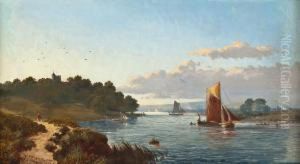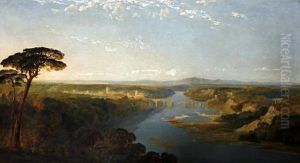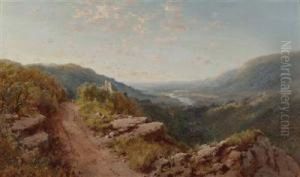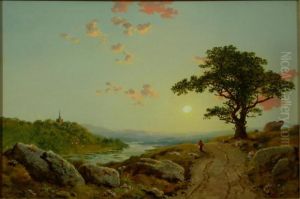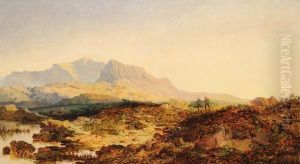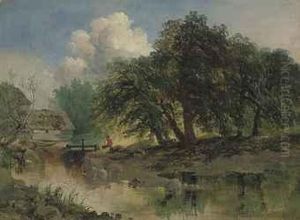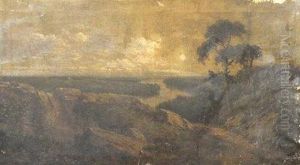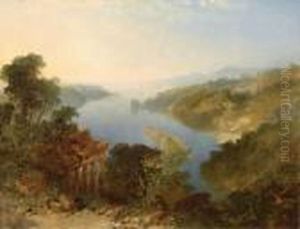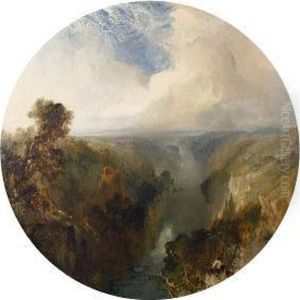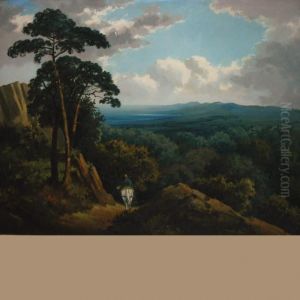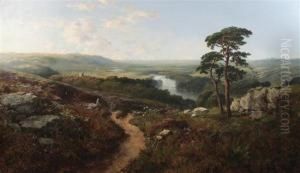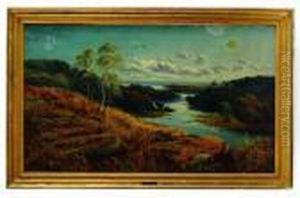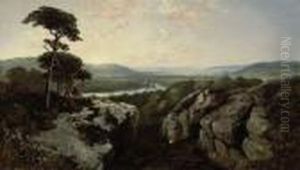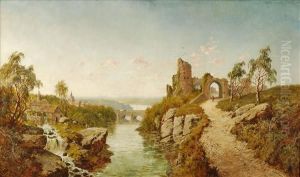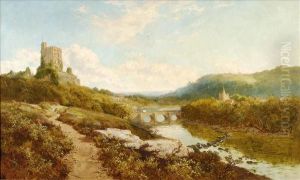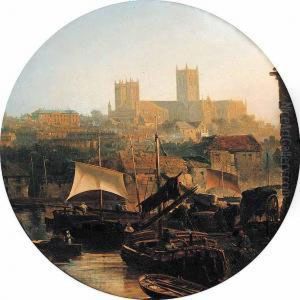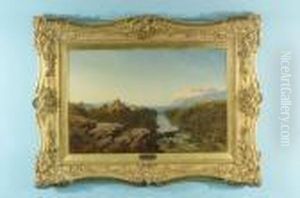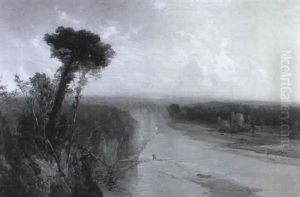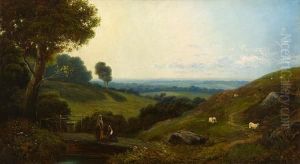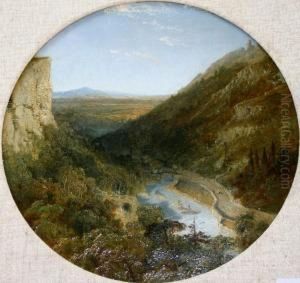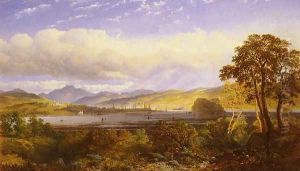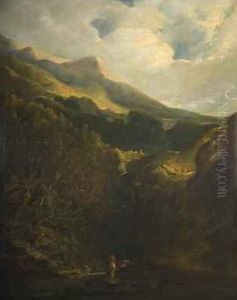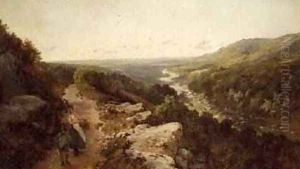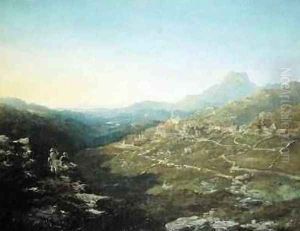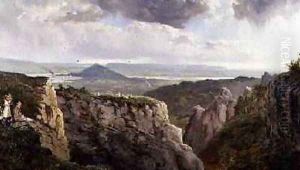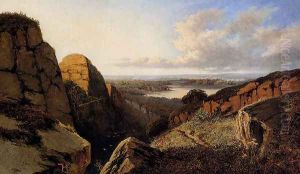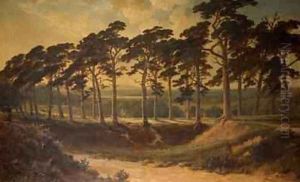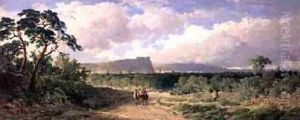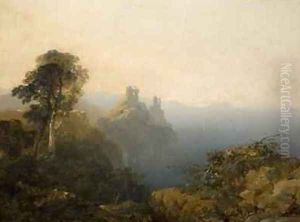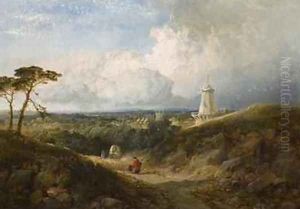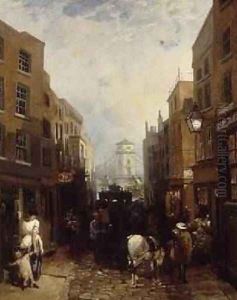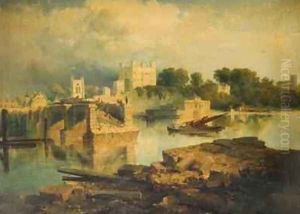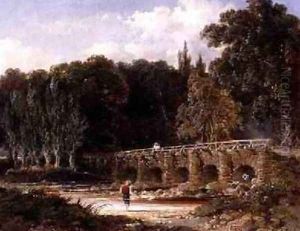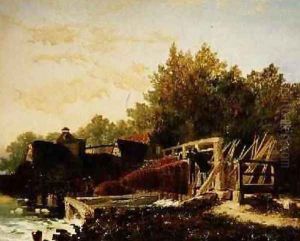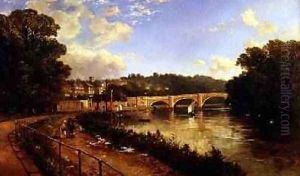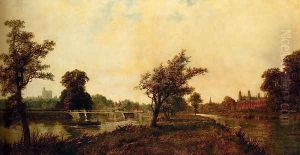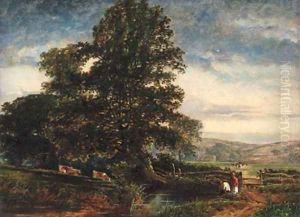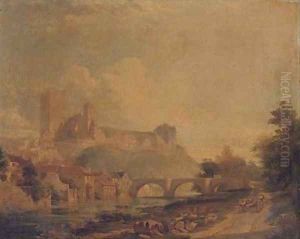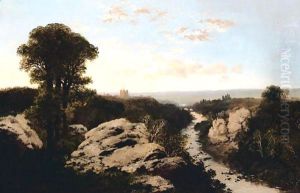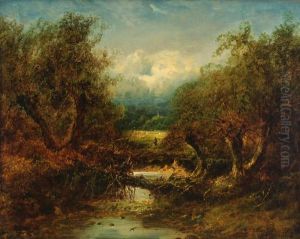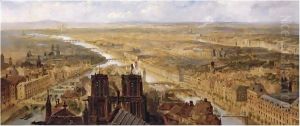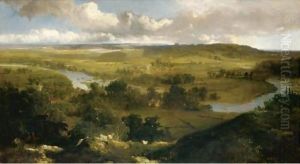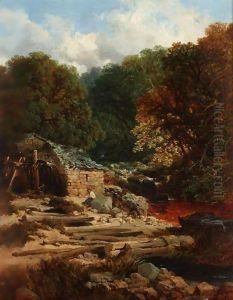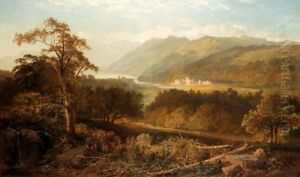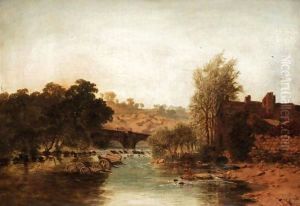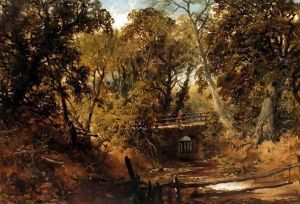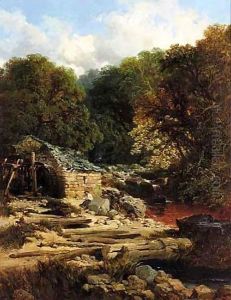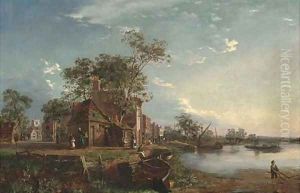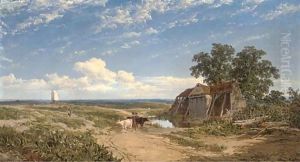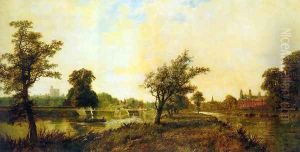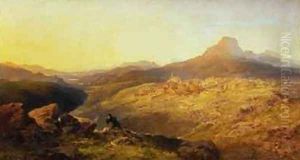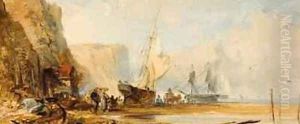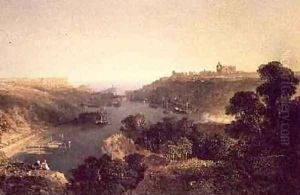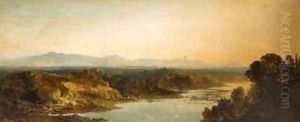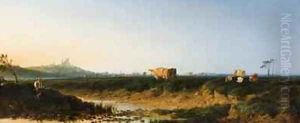Edmund John Niemann Paintings
Edmund John Niemann was a British landscape painter active during the 19th century. He was born on June 15, 1813, in Islington, near London, to parents of German descent. His father, John Diedrich Niemann, was a prosperous merchant, which allowed Edmund to receive a good education. Although he was initially involved in his father's business, Niemann's passion for art led him to pursue a career as a painter.
Niemann began his artistic career as an amateur, teaching himself to paint without any formal education in the arts. In the early 1830s, he started exhibiting his works at the British Institution, and by 1835, he had become a professional artist. Niemann's landscapes were influenced by the Romantic movement, and his early works show a fascination with the power and beauty of nature, often depicting dramatic skies, tumultuous waterways, and rural scenes with a sense of grandeur.
In 1844, Niemann moved to High Wycombe, Buckinghamshire, and later to Henley-on-Thames, where the picturesque landscapes of the countryside provided ample inspiration for his work. He exhibited frequently at the Royal Academy and the Suffolk Street Gallery of the Society of British Artists. His paintings were well-received, earning him recognition and success during his lifetime.
Niemann's style evolved over the years, and he became known for his meticulous attention to detail and his ability to capture the varying effects of light and atmosphere. He often painted the same scene multiple times under different weather conditions or times of day, much like the French Impressionists who followed. However, Niemann's work remained rooted in the Romantic tradition, and he did not adopt the looser brushwork or brighter palette associated with Impressionism.
Throughout his career, Niemann enjoyed considerable success and was able to support a large family. He had fifteen children with his wife, six of whom survived to adulthood. Two of his sons, Edmund Horace Niemann and John Bertrand Niemann, also became artists. Edmund John Niemann continued to paint until his death on April 15, 1876, in Brixton Hill, London. His work continues to be appreciated for its contribution to British landscape painting and its reflection of 19th-century Romantic sensibilities.
